Introduction
In the rapidly evolving regional aviation sector, insurance requirements for aircraft represent a crucial legal and operational concern for both domestic and international operators. As Qatar rises as a significant hub for business, tourism, and commerce, understanding its specific insurance obligations becomes imperative—especially for entities and individuals operating from the UAE, a neighboring country with close commercial and regulatory ties. This article provides an in-depth legal consultancy analysis of Qatar’s insurance requirements for aircraft, connecting them with UAE operators’ regulatory strategies and compliance needs in 2025 and beyond.
Recent legislative updates—driven by global legal harmonization, greater regulatory scrutiny, and heightened risk management standards—mean that UAE-based lessors, airline executives, HR managers, and aviation legal practitioners must proactively review their cross-border compliance frameworks. This analysis references official sources, such as Qatar Civil Aviation Authority (QCAA) regulations, relevant international conventions, and insights from UAE legal doctrine to ensure authoritative, practical guidance.
Table of Contents
Overview of Aircraft Insurance Law in Qatar
Scope and Types of Mandatory Insurance
Breakdown of Statutory Provisions and Compliance Obligations
Comparative Analysis: Qatar vs. UAE’s Aircraft Insurance Regimes
Case Studies and Practical Scenarios
Risks of Non-Compliance and Compliance Strategies
Strategic Recommendations and Future Developments
Overview of Aircraft Insurance Law in Qatar
Legislative Context
Aircraft operations in Qatar are primarily governed by the Qatari Law No. 15 of 2002 on Civil Aviation (hereafter, the Civil Aviation Law) and a suite of implementing regulations from the Qatar Civil Aviation Authority (QCAA). These local provisions are supplemented by Qatar’s adherence to several critical international frameworks, including the 1999 Montreal Convention and the 1944 Chicago Convention, ensuring that insurance standards meet global expectations.
The Civil Aviation Law mandates that no aircraft may operate to, from, or within Qatari airspace without a valid insurance policy, specifically designed to cover liability towards third parties, passengers, and cargo. This statutory requirement upholds aviation safety, protects stakeholders, and aligns Qatar with best practices in the international aviation community.
Relevance for UAE Operators
Given the extensive commercial and logistical links between the UAE and Qatar, UAE-based airlines, lessors, and maintenance entities must closely align their operational and compliance strategies with the Qatari regulatory environment, especially when managing fleets that cross frequently between these jurisdictions.
Scope and Types of Mandatory Insurance
Who Is Covered?
Article 52 of Qatar’s Civil Aviation Law makes it explicit: All aircraft operators—whether Qatari or foreign—must hold insurance covering liabilities for damages to third parties, passengers, baggage, and cargo. These requirements apply to operators leasing, chartering, or managing aircraft registered in or entering Qatari territory.
Main Insurance Categories
| Insurance Type | Statutory Purpose |
|---|---|
| Liability Insurance | Covers bodily injury or death to passengers, third parties, and property on the ground caused by the operation of the aircraft. |
| Passenger Insurance | Protects the liability of airlines toward their passengers as per international conventions (notably, the Montreal Convention). |
| Cargo Insurance | Insures against damages or loss of cargo during international or domestic carriage. |
| Aviation Hull Insurance | Optional but widely recommended, covering physical damage to the aircraft itself during operations. |
The minimum coverage amounts are periodically updated via QCAA circulars and depend on the aircraft’s maximum take-off weight (MTOW), the number of seats, and flight routes. UAE-based stakeholders are advised to monitor these specific requirements before engaging in Qatari operations.
Insurance Policy Approval and Documentation
Operators must secure approval for their insurance policies directly from the QCAA, providing proof of valid coverage before being granted operational permits or slot allocations. The policy must be provided in Arabic (or with a certified translation), and it must be issued by a QCAA-recognized insurance provider or a duly licensed foreign insurer with local reinsurance backing.
Breakdown of Statutory Provisions and Compliance Obligations
Key Statutory Clauses
Article 53: The liability coverage must be continuous for the period of operation and tailored to the specific risks the aircraft may encounter in Qatari airspace.
Article 54: Policies must cover minimum liability thresholds as prescribed in QCAA Circular 07/2018 and its subsequent updates.
Article 55: Passengers and cargo insurance must reflect the full scope of liability imposed by international conventions to which Qatar is a party, overriding contractual limitations where necessary.
Approval Process Flow
- Operator secures or renews an aviation-specific insurance policy meeting QCAA minimum standards.
- Policy documentation is submitted electronically to QCAA for preliminary review (typically two weeks before scheduled operation).
- QCAA issues approval or requests clarifications/modifications.
- Only upon receipt of formal QCAA approval may the carrier operate in Qatari airspace.
Penalty Structure for Non-Compliance
Operating without compliant insurance may result in:
- Immediate revocation or suspension of operational approvals.
- Heavy fines ranging from QAR 100,000 to QAR 500,000 per incident (see QCAA Circular 05/2020).
- Detention of aircraft in severe cases until proof of insurance is presented.
- Possible criminal liability for responsible company officers (if negligence is proven).
Recommended Visual/Table Placement: Penalty Comparison Chart
| Offence | Qatari Penalty | UAE Penalty (for reference) |
|---|---|---|
| No insurance while operating | QAR 500,000 fine + suspension | AED 1,000,000 fine + suspension |
| Insufficient coverage | QAR 250,000 fine | AED 500,000 fine |
| Failure to present documentation | QAR 100,000 fine | AED 100,000 fine |
Comparative Analysis: Qatar vs. UAE’s Aircraft Insurance Regimes
Regulatory Frameworks
The UAE operates under Federal Law No. 20 of 1991 and subsequent Cabinet Resolutions regulating civil aviation insurance. Its framework broadly mirrors Qatar in requiring strict liability insurance, with the difference primarily in administrative procedures and certain threshold values.
Recent UAE Law 2025 Updates
In the UAE, anticipated changes for 2025 under the draft UAE law updates aim for enhanced harmonization with Gulf Cooperation Council neighbors, including Qatar, especially regarding digital submission of policies, greater recognition of foreign insurers, and more stringent financial guarantee mechanisms for high-capacity airlines. UAE operators must monitor these updates for dual compliance when flying to or over Qatar.
| Aspect | Qatar | UAE (2025 Updates) |
|---|---|---|
| Insurance Policy Submission | Physical/electronic to QCAA | Digital portals mandated (MOJ UAE) |
| Minimum Liability Limits | Based on MTOW and passenger numbers | Standardized for most commercial aviation |
| Foreign Insurers | Allowed with local reinsurance | Wider scope for foreign insurer approval |
| Fines for Non-Compliance | Up to QAR 500,000 | Up to AED 1,000,000 |
Operational Implications
UAE lessors and airlines must ensure their insurance portfolios are formatted and certified in a manner compatible with both regimes, especially when aircraft frequently rotate between UAE and Qatari airports. Legal counsel should closely review double-insurance risks, subrogation terms, and jurisdiction clauses in policies to prevent disputes and administrative holdups.
Case Studies and Practical Scenarios
Hypothetical Scenario 1: UAE-Based Lessor Leasing to Qatari Operator
A UAE leasing company contracts a Qatari operator for a long-term wet lease. The lease agreement must require that the Qatari operator maintains compliant insurance per both QCAA and UAE law, with express warranties and indemnities for any lapse in coverage. Legal counsel should audit insurance terms annually and insert force majeure protections covering regulatory suspensions.
Hypothetical Scenario 2: Emergency Landing of Non-Compliant Aircraft
A foreign aircraft, insured below the QCAA minimum limit, requests an emergency landing at Doha’s Hamad International Airport due to technical failure. Upon audit, the QCAA identifies insufficient coverage; the carrier faces a QAR 250,000 fine and is required to upgrade coverage before departure, creating costly delays and reputational impact.
Case Study 3: Cross-Border Joint Ventures
A joint venture between a UAE cargo carrier and a Qatari logistics company runs scheduled flights. To avoid double penalties, a unified insurance solution compliant with both jurisdictions is negotiated, with clear apportionment of liability, unified claims handling, and delegated compliance reporting responsibilities.
Risks of Non-Compliance and Compliance Strategies
Legal Risks
- Operational Suspension: Immediate grounding of aircraft lacking valid insurance.
- Administrative Penalties: Fines, loss of commercial contracts, and reputational risks.
- Civil and Criminal Liability: Exposed officers or directors may be held personally responsible if gross negligence is proven in risk management.
Financial and Commercial Risks
- Increased Litigation: Uninsured liability for catastrophic incidents can result in court-ordered compensation exceeding QAR/AED maximums.
- Insurance Non-Payment: Policies not recognized by local regulators may not pay out, leaving operators exposed and stakeholders uncompensated.
- Regulatory Scrutiny: Repeat non-compliance can result in extended audits and blacklist of operators or insurers.
Strategic Compliance Recommendations
- Annual Legal Audit: Engage specialized aviation legal consultants for annual reviews of insurance compliance in both Qatar and UAE.
- Centralized Policy Repository: Digitally manage all active insurance documentation, ensuring real-time access and ease of regulator submission via UAE MOJ and QCAA platforms.
- Training & Awareness: Conduct regular compliance training for aviation managers and in-house counsel on latest QCAA and UAE updates, including mock audits and crisis scenario planning.
- Contingency Planning: Prepare emergency checklists detailing steps to rectify compliance breaches (e.g., rapid policy upgrade, insurer liaison, regulator notification).
Suggested Visual: Compliance Checklist Table
| Compliance Step | Responsible Party |
|---|---|
| Policy currency review | In-house Legal/Compliance Officer |
| Policy documentation submission | Operations Manager |
| QCAA/UAE MOJ approval tracking | Compliance Administrator |
| Claims procedures review | Risk Management Team |
Strategic Recommendations and Future Developments
Expected Regulatory Trends (2025 Onward)
- Greater digitalization of insurance processes, enabling real-time verification between the UAE and Qatar civil aviation authorities.
- Enhanced due diligence of foreign insurers and mandates for local reinsurance participation.
- Potential mutual recognition of insurance certificates across Gulf states, simplifying compliance for multinational operators.
- Increased frequency of joint regulatory audits and cross-border enforcement collaborations.
Operators are advised to invest in compliance technology, maintain robust professional relationships with both countries’ authorities, and engage trusted legal advisors to keep pace with evolving standards.
Conclusion
The insurance requirements for aircraft operating in Qatar are robustly defined, with rigorous enforcement and significant penalties for non-compliance. For UAE-based aviation businesses and legal practitioners, the ability to understand, implement, and pre-emptively address these obligations is no longer a competitive advantage—it is essential business practice. The close legal harmonization between Qatar and the UAE, combined with anticipated law updates in 2025, demands a proactive, strategic compliance posture.
The recommendations outlined in this article—grounded in statutory authority and practical experience—should serve as a foundation for ongoing compliance, risk management, and operational excellence. Legal and commercial leaders are encouraged to integrate these insights into their corporate governance frameworks, continually monitor regulatory change, and act swiftly in response to new legal developments across the Gulf region.




